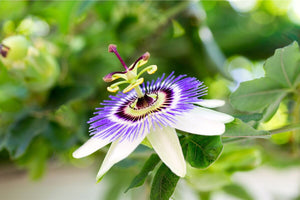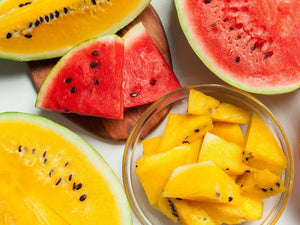Winter Sowing - Start Your Seeds Now for Faster, Simple Growing
TechniquesWinter can be tough on gardeners. There’s only so much planning you can do before you start itching to get outside and get something growing. If you think snowy days mean you and your plants have to stay inside, you need to learn about Winter Sowing!

What is winter sowing?
Winter sowing is a method of sowing seeds outdoors. But it is more than just directly sowing seeds into a garden. The winter sowing method uses plastic containers to shelter the seeds and allow the soil to warm up quicker. Sometimes this method is also referred to as Milk Jug Greenhouses since this is the most common container used in winter sowing.
Benefits of Winter Sowing
There are several benefits that gardeners appreciate about winter sowing:
Natural cold stratification. The seeds will go through a cold period and receive the cold stratification they need to germinate.
No extra care to harden off seedlings. Because the seeds are sown outdoors, they are already acclimating to the outdoor environment.
Save indoor space. Growing lots of plants from seed? Winter sowing can free up the indoor grow space for plants that need a more controlled environment.
Low-cost method. Using materials you already have can make it an economical way to start seeds.
Earlier harvest. Cold-hardy greens will be ready to eat sooner in the spring.
Carefree. You can almost plant and forget about them. It’s that easy.
What Seeds are Good for Winter Sowing?
Cold-weather crops are a natural for winter sowing, as are plants that self-sow. Additionally, any seeds that need cold stratification or scarification. Check the seed packets to see which ones are good candidates.
Some seeds we suggest for winter sowing:
Flowers:
Herbs:

Basic Milk Jug Greenhouse Instructions:
- Use a clean milk jug.
- Cut around the middle, leaving a hinge on one side.
- Cut drainage holes in the bottom.
- Fill with a seed-starting mix at a depth of 3 to 5 inches.
- Sprinkle seeds on top of the soil and cover to a depth of about 1/4”. (Check individual seed packets.)
- Water the soil, so it is fully saturated but with no standing water.
- Label the container with a waterproof marker. (Adding an additional tag inside is helpful.)
- Use duct tape to keep the lids on.
- Set them outside in the cold and snow.
- When temperatures are 50 and above, you can open the tops.
- Close the tops when it is cold.
Where do I put my mini-greenhouses?
Place the containers out of the sun until you are ready for them to sprout. If you are in a very cold location, you will want a spot that gets some sun during the day. In a milder location, they can be in the shade, so they don’t heat up too much.
When do I start winter sowing?
Traditionally winter sowing can start any time after the winter solstice. However, late January to mid-March works best, depending on your location. This is because the seeds will need enough time in the cold to make them go dormant before the weather warms up.
Do I need to water?
When you start with saturated soil, you shouldn’t have to water again until the seeds start sprouting. But keep an eye on them. Especially during warm spells to make sure they haven’t dried out or started sprouting.
Won’t my seeds freeze?
Yes, your seeds will freeze. And that’s part of the germination process. Plants that self-sow drop their seeds and come back year after year.
When should I transplant?
When your seedlings have at least two sets of true leaves, they are ready to transplant. Ideally, the plants will be touching the top of the container and have well-established roots.
What other containers can I use for winter sowing?
Any container that can hold 3 to 5 inches of soil and has a lid can be used for winter sowing. Gardeners have used soda bottles, takeout containers, rotisserie chicken containers, and lettuce bins.

Some Lessons Learned
When using the winter sowing method, we’ve learned that you can’t completely plant and forget about them. We’ve had some plants die when they didn’t get water after they sprouted.
We’ve also learned that tomatoes and peppers will have mixed results depending on the weather. These plants prefer growing in warm temperatures, so you will have to experiment with what works in your location.
We like this method for cold-hardy greens. You’ll be able to enjoy fresh kale in your smoothies much earlier in the growing season.
Winter sowing is an excellent option for gardeners in cold climates. Try these mini greenhouses when you just can’t wait to get seeds in the ground. It’s also perfect for seeds that need a period of cold stratification. With winter sowing, you can start milkweed, sweet peas, and other flowers that attract pollinators to your garden.
We enjoy experimenting with all kinds of growing techniques. So, if you try winter sowing, let us know how it goes. We love to hear what our fellow gardeners are learning.
4 comments
Popular Posts
-

Passion Flower Vine: How to Start from Seed and Get Gorgeous Blooms
-

Sweet and Juicy Heirloom Watermelon Varieties to Grow






Yes, you will want to remove the mulch in spring to allow the seeds to sprout.
I’m not sure if poppies or hollyhocks need cold stratification. I do know they need sunlight to germinate and to gently press into the soil and cover with mulch. So, in Spring do I remove the mulch?
Barbara – Absolutely! Coneflower seeds can be sown directly into the space you want them to grow. They just need the cold period to germinate successfully.
Can’t you sow the coneflower seeds directly onto the ground without the hinged milk jug green house????
Leave a comment